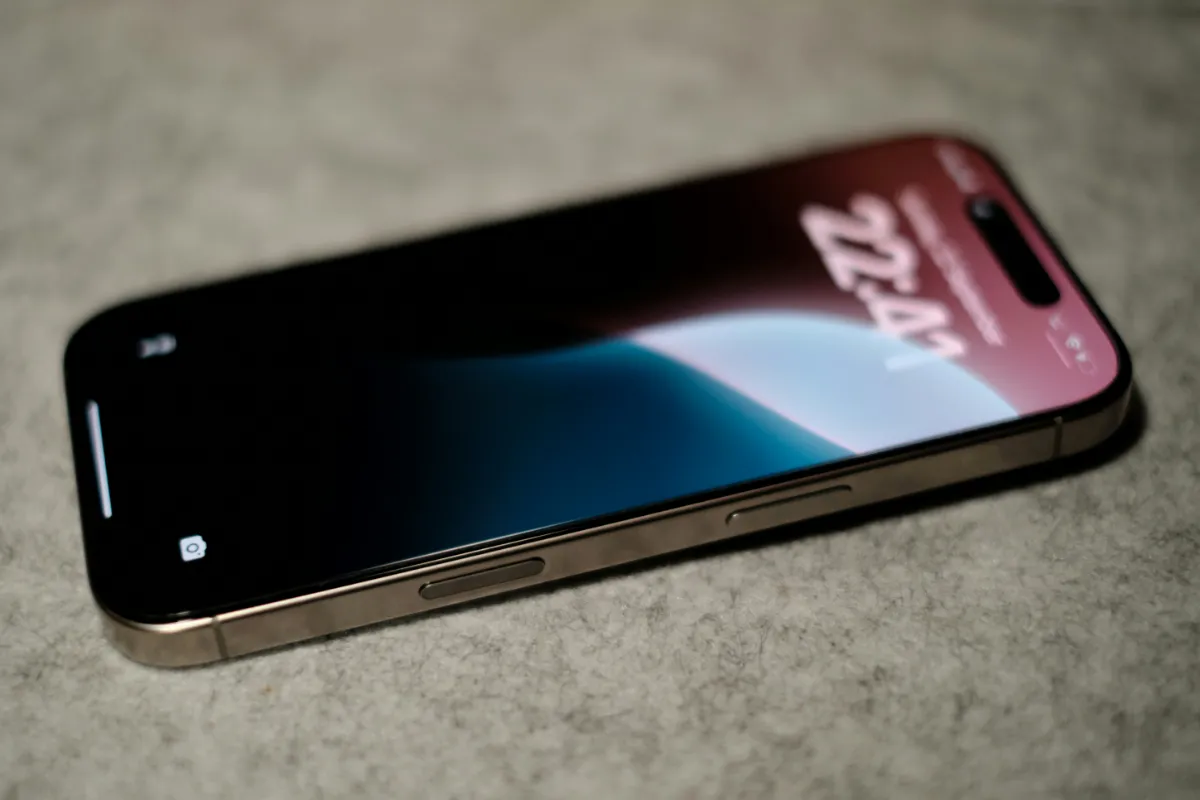eSIM
How Many eSIMs On The iPhone 16?
Quick Answer: The iPhone 16 series supports multiple eSIMs with the ability to up to 10 eSIMs while using two active eSIMs simultaneously.
This digital SIM technology eliminates the need for physical SIM cards, enhancing your connectivity options when traveling or managing multiple data plans.
Need An eSIM?
If you’re looking for an eSIM, check out our prepaid eSIM data plans for 200+ countries available.
What is eSIM Technology and How Does it Work on iPhone 16?
An eSIM (embedded SIM) is a digital SIM built into your iPhone. Unlike traditional physical SIM cards that you insert and remove, an eSIM is a small chip permanently installed in your device that you activate digitally through your carrier.
Understanding eSIM Technology
The eSIM chip is programmable remotely by your mobile carrier, cannot be lost or damaged, takes up less space inside your phone, reduces plastic waste, and allows for easy carrier switching without physical SIM swapping.
How eSIM Differs from Physical SIM Cards
| Feature | Physical SIM | eSIM on iPhone |
|---|---|---|
| Format | Removable card | Built into device |
| Activation | Insert into phone | Digital activation |
| Switching carriers | Physically swap cards | Digital profile change |
| Risk of damage/loss | Yes | No |
| Space requirements | Needs tray and slot | Minimal internal space |
eSIM Functionality on iPhone 16 Models
The iPhone 16 and iPhone 16 Pro Max offer enhanced eSIM capabilities compared to previous generations. All iPhone 16 models sold in the US have no physical SIM card tray, making eSIM the only option for cellular connectivity. In other regions, the iPhone 16 maintains dual SIM functionality with either two eSIMs or one physical SIM card and one eSIM.
How Many eSIMs Can Be Stored on an iPhone 16?
The iPhone 16 supports storing 10 or more eSIM profiles while allowing two to be active simultaneously. This means you can maintain numerous cellular plans and easily switch between them without going through the activation process again.
Comparison with Previous iPhone Models
| iPhone Model | Maximum Stored eSIMs | Active eSIMs |
|---|---|---|
| iPhone 16/16 Pro | 10 | 2 |
| iPhone 15 series | 8+ | 2 |
| iPhone 14 | 8+ | 2 |
| iPhone 13 | 8 | 2 |
| iPhone 12 series | 8 | 2 |
| iPhone 11 series | 8 | 1 |
| iPhone XS/XR/XS Max | 8 | 1 |
| iPhone SE 3 | 8 | 1 |
| iPhone SE 2 | Limited support | 1 |
Benefits of Having Multiple eSIMs
Multiple eSIMs allow you to maintain separate work and personal lines, use different data plans for different needs, keep local connectivity options when traveling internationally, and have backup carriers if one has coverage issues.
Can You Use Multiple eSIMs Simultaneously on iPhone 16?
Yes, the iPhone 16 supports two active eSIMs at once, allowing you to use two different phone numbers or data plans simultaneously on one device.
Dual SIM Functionality on iPhone 16
With dual SIM functionality, you can receive calls and texts on both numbers, use different data plans for different purposes, designate which line to use for cellular data, set a default line for communications, and choose which line to use for specific calls.
Activating and Switching Between eSIMs
To switch between stored eSIMs:
- Go to Settings > Cellular
- Tap on the eSIM you want to activate
- Select “Turn On This Line”
- Wait for activation to complete
Limitations of Using Multiple eSIMs at Once
Even with the iPhone 16’s advanced capabilities, there are limitations: only two eSIMs can be active simultaneously, some features may be unavailable in dual SIM mode, battery life may decrease slightly, and carrier compatibility varies by region.
How Do You Set Up and Manage eSIMs on iPhone 16?
Setting up an eSIM on your iPhone 16 typically doesn’t require visiting a carrier store and can be done through several methods.
Step-by-Step Guide to Adding an eSIM
There are three main methods to add an eSIM:
- From your carrier app or website:
- Download your carrier’s app
- Log in to your account
- Follow the in-app eSIM setup process
- Using a QR code:
- Go to Settings > Cellular
- Tap “Add Cellular Plan”
- Scan the QR code from your carrier
- Follow the on-screen instructions
- Using carrier activation code:
- Go to Settings > Cellular
- Tap “Add Cellular Plan”
- Tap “Enter Details Manually”
- Enter the information provided by your carrier
Managing Multiple eSIM Profiles
The Cellular settings menu lets you view all your plans, select your primary line, choose which line to use for data, and label each line (e.g., “Work” or “Personal”) for easier identification.
Troubleshooting Common eSIM Issues
If you experience eSIM problems, check that your iPhone 16 is unlocked (if using multiple carriers), verify your carrier supports eSIM, ensure iOS is updated, try restarting your device, or contact Apple support for persistent issues.
What Are the Advantages of Using eSIMs on iPhone 16 for Travel?
eSIM technology makes international travel much more convenient with your iPhone 16.
eSIM Benefits for International Roaming
When traveling internationally, eSIMs allow you to avoid expensive roaming charges while keeping your home number active. You can use a local data plan without removing your primary SIM and maintain connectivity without hunting for a local SIM card shop upon arrival.
Switching Between Local Carriers Abroad
With multiple eSIMs, you can prepare plans before your trip, switch instantly when crossing borders, use prepaid data plans in each country, maintain service where different carriers have better coverage, and keep your home number accessible.
Cost-Saving Potential of eSIM Plans for Travelers
Local data plans through eSIMs are typically much cheaper than international roaming. Many providers offer travel-specific eSIMs with competitive rates, and you can easily switch to the most cost-effective option as you move between countries.
Are There Any Carrier Restrictions for Using eSIMs on iPhone 16?
While eSIM technology is becoming widely supported, there are still some limitations to be aware of.
Compatibility with Major Network Providers
Most major carriers in the US (AT&T, Verizon, T-Mobile) and many international carriers support eSIM, but some smaller carriers or those in developing markets may still require a physical SIM card. Always verify compatibility with your carrier.
Carrier-Specific eSIM Activation Processes
Activation methods vary by carrier—some provide QR codes via email or their website, others use mobile apps, and some may require store visits. Activation time ranges from nearly instant to several hours depending on the carrier.
Potential Limitations or Restrictions by Region
In China mainland, Hong Kong, and Macao, dual nano-SIM is used instead of eSIM due to regulations. Some countries have limited carrier support for eSIM, certain features may be restricted based on local rules, and older plans might not be compatible.
How Does iPhone 16’s eSIM Capability Compare to Other Smartphones?
The iPhone 16’s eSIM implementation is among the most comprehensive in the smartphone market.
eSIM Support in Other Flagship Devices
While Samsung, Google, and other manufacturers have incorporated eSIM into their devices, Apple’s approach with multiple stored profiles and dual active eSIMs remains at the forefront of implementation, particularly in how seamlessly it integrates with iOS.
Unique Features of iPhone 16’s eSIM Implementation
The iPhone 16 offers an intuitive interface for managing multiple plans, strong carrier support across major markets, quick switching between stored profiles, and a reliable activation process refined through multiple generations.
Future Trends in eSIM Technology for Smartphones
As eSIM technology evolves, physical SIM cards will likely become obsolete, more carriers will support eSIM activation, profile management will improve, integration with other services will deepen, and international roaming may become even more streamlined.
The iPhone 16’s robust eSIM capabilities advance mobile connectivity by supporting multiple stored profiles with two active simultaneously. This technology eliminates physical SIM swapping, making it ideal for users with multiple lines or frequent travelers. The setup process is streamlined through QR codes or carrier apps, and most major carriers now support eSIM technology.
While checking carrier compatibility is still important, especially in regions with limited support, the technology continues to evolve and expand. For specific questions about using eSIM on your iPhone 16 with iOS17, contact your carrier or Apple support for personalized assistance.









